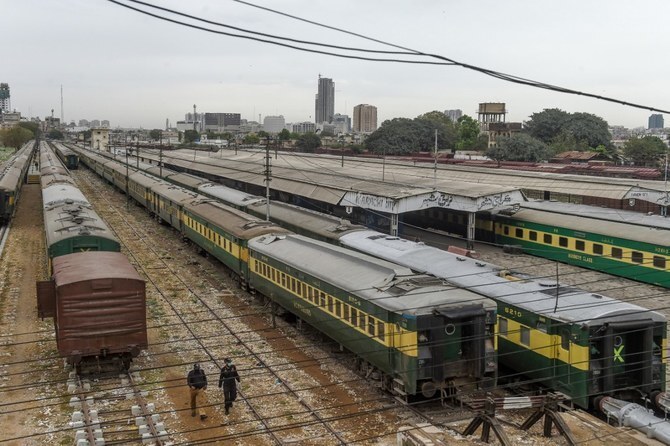ISLAMABAD: Federal Minister for Commerce Jam Kamal Khan said this week Pakistan would reach out to Uzbekistan, Turkmenistan as well as the UAE to expedite work on a trans-Afghan railway project that will connect South and Central Asia with the aim of enhancing trade and economic opportunity in the region.
Running from northeastern Kazakhstan to Pakistan via Uzbekistan and Afghanistan, the railway initiative is part of a broader strategy to establish a southern corridor using both land and sea routes to eventually link South and Central Asia with the port of Jebel Ali in the UAE.
On Thursday, the Pakistani commerce minister reaffirmed Islamabad’s commitment to the project in a meeting with Kazakh Ambassador Yerzhan Kistafin to discuss trade, regional connectivity, and economic cooperation and lay the groundwork for several collaborative initiatives.
“The Minister reiterated the significance of the Trans-Afghan railway for strengthening connectivity with Central Asia,” the commerce ministry said in a statement on Thursday. “He committed to reaching out to Afghanistan, Uzbekistan, Turkmenistan, and Abu Dhabi authorities to expedite the project’s completion.”
In recent months, the railway project has seen the involvement of several countries, including Pakistan, the UAE, Uzbekistan, Afghanistan and Qatar.
Earlier this year, the Taliban government in Kabul signed a memorandum with Uzbekistan and the UAE to begin studies on the project’s viability after a meeting in Tashkent on Feb. 19, where technical, financial, and strategic aspects of the scheme were discussed. These developments followed an earlier meeting between transport ministers from Uzbekistan, Afghanistan, Pakistan, and Qatar, which led to the approval of the main routes and implementation modalities for the corridor.
However, Pakistan faces several challenges to the corridor’s completion.
Political instability, insurgency in the southwestern Balochistan province bordering Afghanistan and Iran, and security threats to ongoing projects under the China-Pakistan Economic Corridor (CPEC) are significant hurdles. Strained relations with Afghanistan due to the activities of the Tehreek-e-Taliban Pakistan (TTP) militant groups, which Islamabad says operates from safe havens in Afghanistan, and an expulsion drive targeting Afghan refugees will also complicate Pakistan’s aim to secure trade routes vital to the corridor. The Taliban rulers in Afghanistan deny they allow Afghan soil to be used by terror groups.
The railyway project is part of Pakistan’s wider push to consolidate its role as a pivotal trade and transit hub connecting the landlocked Central Asian states with the rest of the world, leveraging its strategic geographical position. In recent weeks, there has been a flurry of visits, investment talks and economic activity between officials from Pakistan and the Central Asian nations.




















